Remote Work: Statistics Before and During the Pandemic
People and companies who weren’t used to remote work – and even those who were averse to the idea of telecommuting – had to suddenly adapt to this work-and-lifestyle.
Now that most people were able to experience going full remote it’s time to check how the opinions on teleworking have changed: how did people who were new and unprepared for remote work got to experience this change, and what are the expectations for the future, after the pandemic ends?
Do they miss working at their office or is there no turning back for them now that they have experienced the benefits of remote work?
To find out more about this let’s look into some key remote work statistics coming from the US, accounting periods before and after the pandemic started. Keep reading to find out.
1: The majority of the people are working remotely during COVID-19 pandemic
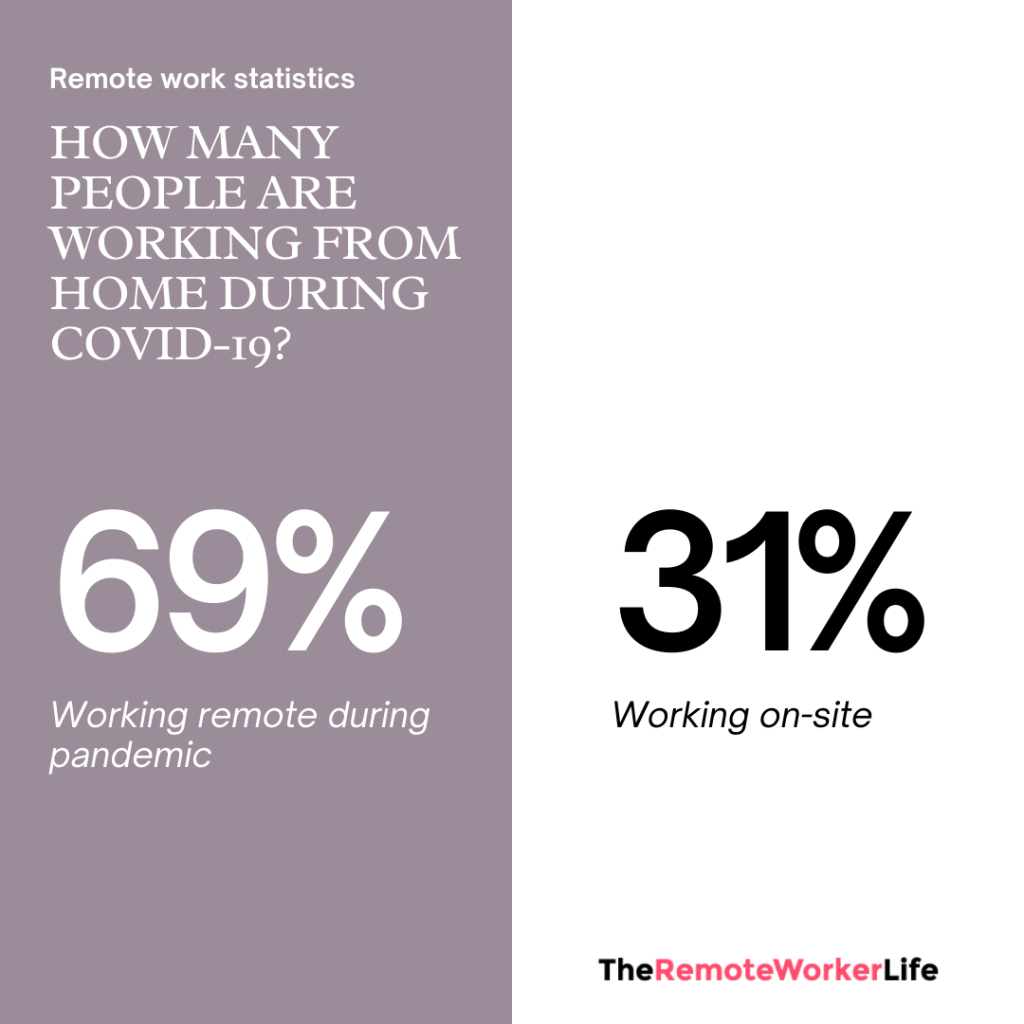
As expected, the number of people working remotely during the pandemic is high, but going 100% remote is difficult due to the nature of some jobs. Amongst others, paramedics, sanitation workers, and firefighters aren’t able to enjoy work-from-home benefits during the pandemic. (Source: Marketplace)
Out of all companies in the US 16% are full remote, meaning they don’t have an office and employees work from home all the time (Source: Findstack)
2: The main reasons people want to work remotely
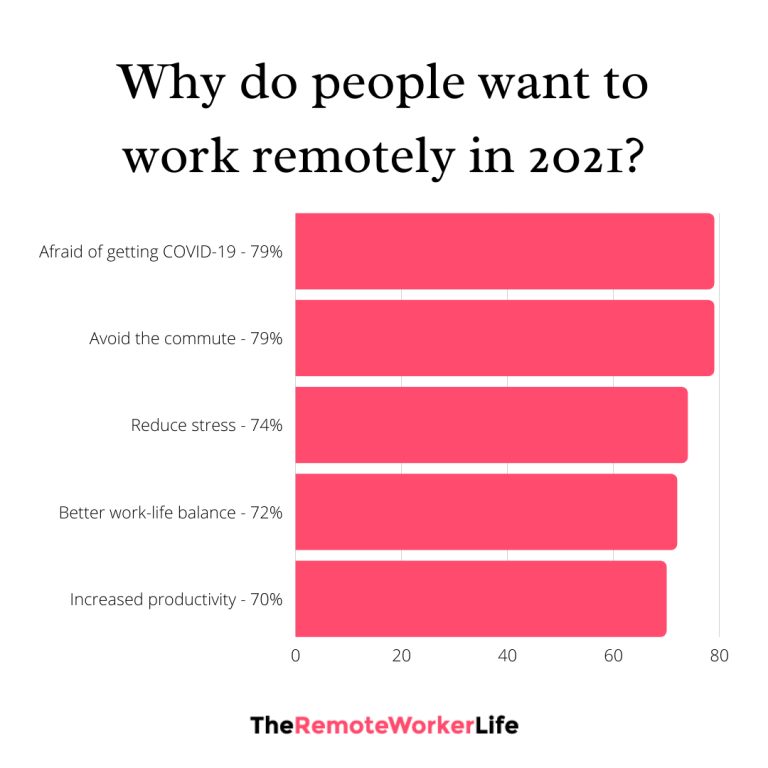
Compared to 2019, the reasons for wanting to work remotely have changed in a drastic manner. The pandemic changed the reasons we have for choosing remote work. In 2019 the reasons were: 91% better work-life balance, 79% better productivity, 78% less stress, 78% avoid the commute, 76% save money (source: Owl Labs).
3: The majority of the people want to continue working remotely after the pandemic ends.
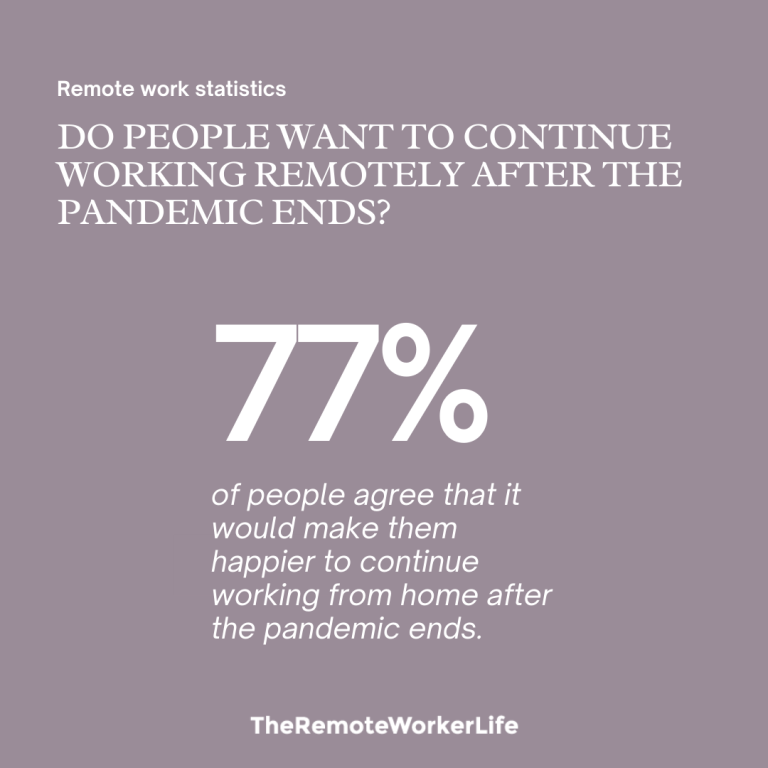
Whether people who initially didn’t choose remote work but had to, because of circumstances would appreciate this work style was something that was hard to predict. Interestingly it seems that the majority of the US workforce enjoys working from home just as much as we do.
4 Almost half of the people would look for another job if they were no longer allowed to WFH.
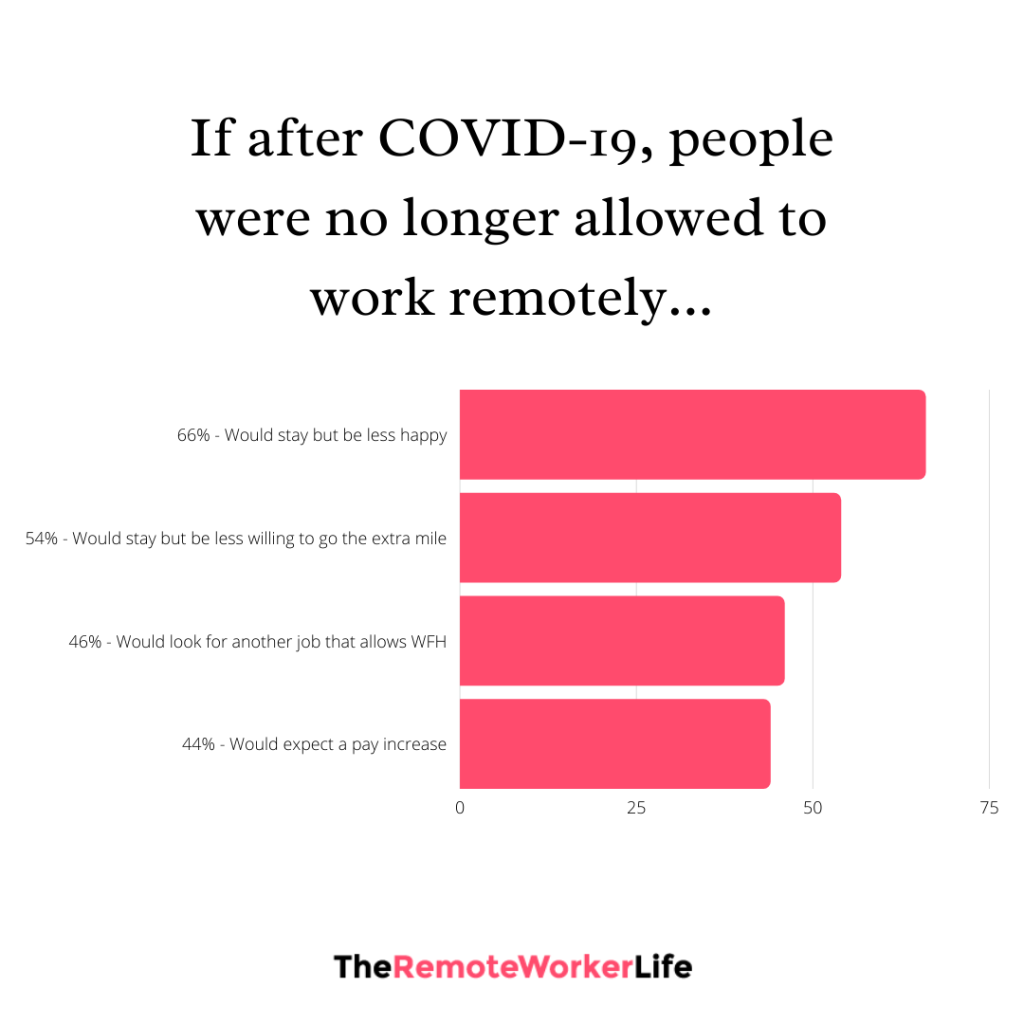
Even though the majority of people in the US wouldn’t leave their job if they weren’t allowed to work remotely anymore it does seem like it would be a huge factor that affects employees’ satisfaction levels and even their motivation. Some people would even consider looking for a different job and a large number of people would expect a pay increase.
5 The majority of the people are the same or more productive during WFH
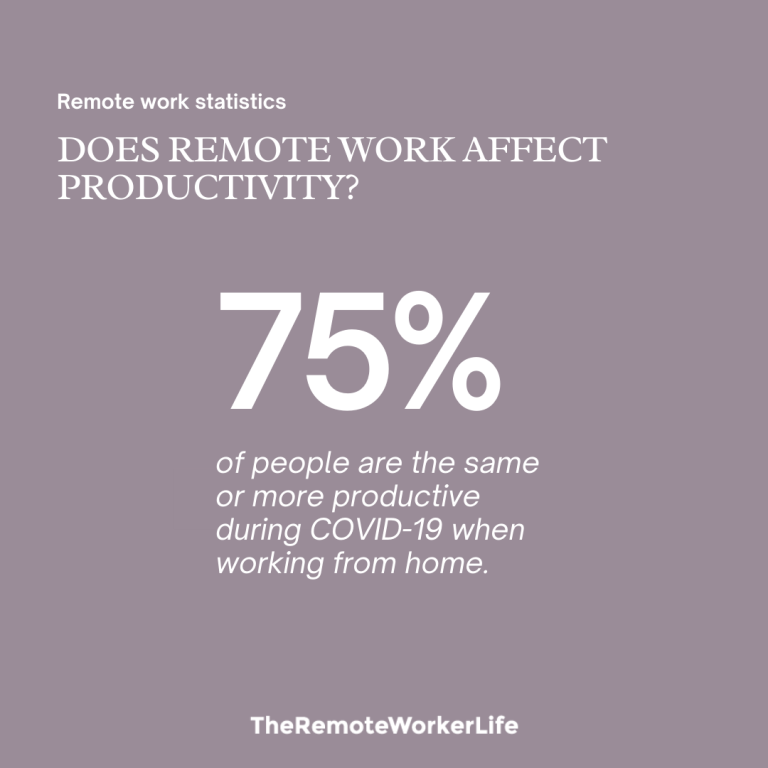
This once again proves the myth that us remote workers have been trying to debunk for as long as this work style has been around. As we mentioned in our blog post “Why Remote Workers are More Productive” we believe that “when the cat is away the mice will be more productive because the cheese prize is exponential” and the statistics support this.
So what is the reason for this increased or same level of productivity?
According to Flexjobs, 75% of people find that there are fewer distractions when working from home, which subsequently leads to increased productivity. The main reason people feel distracted in an office is loud coworkers and they prefer peace and quiet at home.
6 The number of people willing to take a pay cut to keep remote work has increased
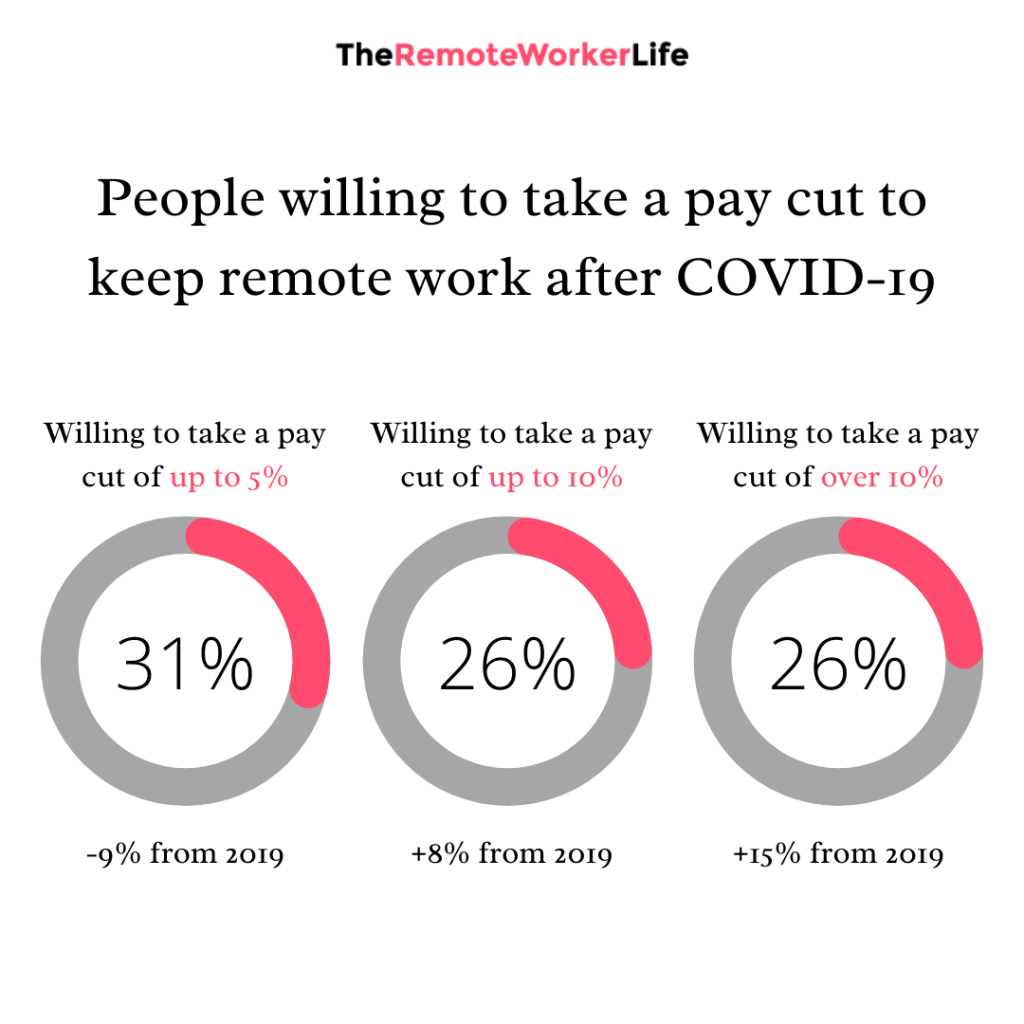
Looking at these numbers it seems that people who were able to try work-from-home in the US are not willing to give up their newly earned perk. The number of people who would consider a pay cut of over 10%, has more than doubled since 2019 which means that this now includes 1 out of 4 people.
7 The biggest change from on-site to remote work is the way people collaborate and communicate.
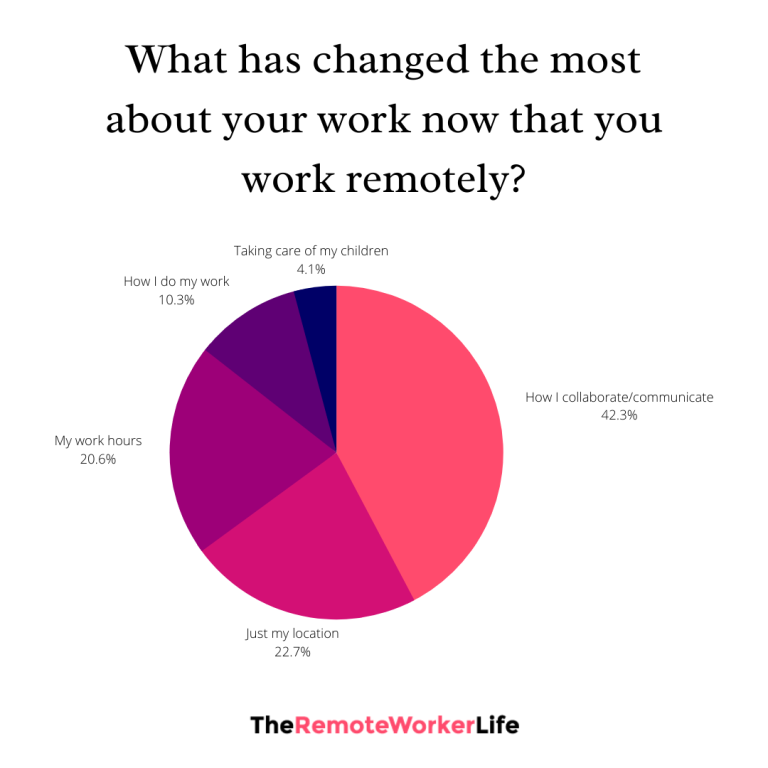
It is interesting to see how 22.7% of people chose “just my location”. Even though communication and collaboration online feels different from being able to talk to your coworkers on-site, it shouldn’t have to be.
I think that the content of our job is still the same and through technology, we should be able to communicate with our coworkers whenever we want to.
What do you think, is remote work different from working in an office besides being in a different location?
I hope you learned something from these remote work statistics, what did you find most surprising? Leave an email!

By Jocelyn ter Morsche Originally from the Netherlands. Living in Tokyo since 2017. Remote worker since August 2020.
Favorite thing about remote work: Playing the guitar or cooking during my break and comfortable clothes.
